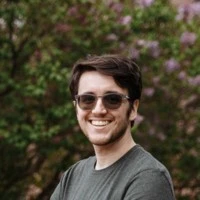Are your customers happy? Your CSAT score holds the key. This metric offers a great representation of customer satisfaction with your services or products, impacting your brand’s growth and retention rates.
Unpacking the what, how, and why, we will guide you through scores and numbers to enhance your customer’s experience.
Key takeaways
- CSAT (Customer Satisfaction Score) is a key metric for gauging how happy your customers are, calculated by the percentage of happy customers from surveys, giving businesses valuable feedback.
- A good score varies by industry but typically ranges from 75% to 85%, and businesses should benchmark against industry standards to assess customer relationships accurately.
- Monitoring your score requires regular customer feedback collection, strategic use of data to enhance customer experience, and may involve complementary metrics such as NPS (Net Promoter Score) and CES (Customer Effort Score) for more in-depth analysis.
In this article we cover:
- What is CSAT score?
- Customer satisfaction score calculation: Formulas
- How to calculate CSAT: Step-by-Step
- Examples of questions for customer satisfaction score surveys
- What is a good CSAT score?
- CSAT score by industry
- When to measure CSAT?
- Why is the CSAT score important?
- What to do next with customer satisfaction scores?;
- How to improve CSAT score
- CSAT pros and cons
- Beyond CSAT: Complementary customer satisfaction metrics
- Tools and technologies for measuring your CSAT score
- Linking customer satisfaction to revenue
What is CSAT score?
The customer satisfaction score, commonly referred to as CSAT, is a key metric for measuring customers’ relationship with the service. It provides insights into how happy customers are with your products or services. It’s the pulse of your customer sentiment, fostering loyalty and pinpointing opportunities for service or product improvement. The score not only reflects the impact of recent changes but also tracks trends over time, making it important for evaluating the effectiveness of new business processes or product updates. This dynamic perspective allows companies to adjust strategies and improve customer experiences based on ongoing feedback.
Now, what is the magic behind this powerful metric?
Customer satisfaction score calculation: Formulas
The calculations can vary depending on the type of scale used and the specific methodology for categorizing and analyzing responses. Here’s a look at the different calculation CSAT formulas:
1. Basic formula

Example calculation: If you have 100 responses, and 70 are ‘yes’ (indicating satisfaction):
- Count the ‘yes’ responses: 70
- Divide by the total number of responses: 70 / 100 = 0.7
- Multiply by 100 to find the percentage: 0.7 × 100 = 70% Thus, the score is 70%.
Advantages:
- Simplicity: Easy to calculate and understand.
- Direct: Measures the CSAT percentage of customers who are satisfied.
Disadvantages:
- Limited nuance: Doesn’t distinguish between levels of satisfaction beyond the positive threshold.
- Potential bias: Responses can be influenced by recent experiences, leading to fluctuations that might not represent overall satisfaction.
2. Top-2 Box Score (common in 1-5 or 1-10 scales)

Example calculation: With responses on a scale of 1-5 from 100 customers:
- 5 stars: 40 responses
- 4 stars: 30 responses
- Add the top two ratings: 40 + 30 = 70
- Divide by the total responses: 70 / 100 = 0.7
- Multiply by 100: 0.7 × 100 = 70% The score is 70%.
Advantages:
- Focused on high satisfaction: This customer satisfaction score formula focuses on customers who give the top two ratings, emphasizing high satisfaction.
- Clearer segmentation: Helps differentiate between general satisfaction and high satisfaction.
Disadvantages:
- Excludes moderate satisfaction: Does not account for moderately happy customers who might still be positive toward the brand.
- May skew perceptions: Can give an inflated perception of satisfaction if not balanced with understanding of lower CSAT ratings.
3. Weighted formula

Example calculation: Using the same response distribution:
- Multiply each rating by its number and respective weight (5 for 5 stars, etc.):
- 5 stars: 5 × 40 = 200
- 4 stars: 4 × 30 = 120
- 3 stars: 3 × 20 = 60
- 2 stars: 2 × 5 = 10
- 1 star: 1 × 5 = 5
- Sum these products: 200 + 120 + 60 + 10 + 5 = 395
- Divide by the maximum possible score (5 × 100 = 500): 395 / 500 = 0.79
- Multiply by 100: 0.79 × 100 = 79%. The Weighted CSAT score is 79%.
Advantages:
- Detailed insight: Provides more granularity by considering the weight of each type of response.
- Adjustable sensitivity: Weights can be adjusted based on the importance of different levels of satisfaction.
Disadvantages:
- Complexity: More complicated to calculate and explain.
- Requires judicious weighting: Incorrect weighting can skew results and lead to misinterpretations.
4. Average rating

Example calculation: Continuing with the same responses:
- Sum the products of ratings and their occurrences: 200 + 120 + 60 + 10 + 5 = 395
- Divide by the total number of responses: 395 / 100 = 3.95 The average rating (CSAT) is 3.95 out of 5, which can also be represented as a percentage of the maximum score.
Advantages:
- Utilizes all data: Every rating is included in the calculation, giving a full spectrum view of customer feedback.
- Easy comparison: Easy to compare across different periods or segments.
Disadvantages:
- Sensitive to extremes: High or low customer satisfaction ratings can disproportionately affect the average.
- Less intuitive: Percentages based on averages might be less intuitive to stakeholders compared to direct positive response rates.
How to calculate CSAT: Step-by-Step
Here’s how is CSAT measured:
- Collect responses: Conduct a customer satisfaction survey asking customers to rate their satisfaction with your product, service, or experience on a predetermined ranking, such as 1 to 5, where 5 represents “very satisfied” and 1 represents “very unsatisfied.”
- Define positive responses: Decide which responses count as “satisfied.” Typically, ratings at the upper end of the ranking (e.g. 4 and 5 on a 1 to 5 scale) are considered positive.
- Tally responses: Count the number of responses that fall into the “satisfied” category and the total number of responses received.
- Calculate CSAT score via the formula: Choose one of the formulas from the above section to calculate the percentage of happy customers.
- Interpret results: A higher percentage indicates higher customer contentment. This metric helps identify strengths and areas for improvement in customer service or product offerings.
Examples of questions for customer satisfaction score surveys
When creating a customer satisfaction score survey, employing a mix of question types allows you to capture a broad range of insights from your customers. Here’s how you can structure your survey with examples of each type of question:
Binary questions:
- “Did our product meet your expectations? Yes/No”
- “Was your issue resolved to your satisfaction today? Yes/No”
- “Would you recommend our service to a friend or colleague? Yes/No”
These questions are straightforward and help quickly gauge the client’s basic level of satisfaction or dissatisfaction with the customer service.
Rating questions:
- “On a scale of 1 to 10, how satisfied are you with the quality of our product?”
- “How would you rate your overall experience with our team, from 1 (very unsatisfied) to 10 (very satisfied)?”
- “On a scale from 1 to 10, how likely are you to purchase from us again?”
Rating scales provide a quantifiable measure of satisfaction, making it easier to track improvements or declines over time.
Open-ended questions:
- “What did you like most about our product or service?”
- “How can we improve your experience in the future?”
- “What additional features or services would you like us to offer?”
Open-ended questions allow customers to express their thoughts in more detail, giving you qualitative data that can be used to identify specific areas for improvement or innovation.
What is a good CSAT score?
A good customer satisfaction score serves as a reflection of customer content and loyalty. Generally, a score below 50% indicates poor satisfaction, while scores from 75% to 85% are considered good, reflecting healthy customer engagement and effective service delivery.
However, it’s important to note that “good” scores can vary significantly across different industries. For example, a score considered good in retail might be different in the hospitality sector. Therefore, applying the CSAT metric relative to industry benchmarks is crucial. This contextual understanding helps in setting realistic objectives for satisfaction improvements and leveraging this data effectively to meet business goals.
CSAT score by industry
The satisfaction score is a universal metric used across industries to capture client satisfaction. However, the average score can vary greatly from one industry to another. This is due to the different customer expectations and experiences inherent in each industry.
Therefore, it’s crucial for call centers to not only measure their score but also benchmark it against industry standards to gain a holistic understanding of their performance. Here are the latest available American numbers for 2024:
- Consumer shipping: Consumer shipping maintains a score of 77%, reflecting stable satisfaction. FedEx shows significant improvement with a score of 80%, indicating a 5% change.
- Energy utilities: Energy utilities show an increase to 75%, marking a 4% increase from the previous year, suggesting better performance in satisfaction across this sector.
- Health insurance: Health insurance industry has improved to 76%, with companies like Humana reaching a score of 82% after a 6% increase, reflecting a trend towards better customer service and coverage.
- Property and casualty insurance: Property and casualty Insurance scores at a rather high percentage of satisfied customers. At 77% with a slight decrease from the previous year, it indicates minor shifts in satisfaction and areas for potential improvement.
- Life insurance: Life Insurance scores have slightly increased to an average of 80%, with AIG and New York Life showing positive changes, which highlights improvements in satisfaction within the industry.
- Online investment: Online investment holds steady with an average customer satisfaction score of 79%, with individual companies like E*Trade showing a 3% improvement.
- Banks: Banks have improved overall to 80%, with noticeable increases in both national and regional banks, driven by enhanced services and customer interactions.
- Credit unions: Credit unions have seen a notable increase to 79%, emphasizing their commitment to providing competitive rates and quality service.
- Financial advisors: Financial advisors maintain a stable score of 80%, with improvements in customer trust and service offerings.
When to measure CSAT?
Timing is crucial when it comes to CSAT score calculation. Key time stamps include:
- Post-purchase: Immediately after a purchase to get feedback on the buying experience.
- After customer support interactions: To evaluate the effectiveness of your support team.
- Post-onboarding: To gauge understanding and appreciation of your service.
- Upon subscription renewal or repeat purchase: To assess ongoing customer loyalty and satisfaction.

The timing of the survey is crucial. Ideally, it should be conducted immediately, while the client is still immersed in the context of their recent interaction with your company. Regularly measuring CSAT after each significant interaction, whether it be a purchase, a support call, or participation in a webinar, helps to obtain accurate and relevant data. It is also recommended to periodically conduct surveys at key moments in the customer lifecycle, such as after the first 30 days of using a product or following the release of a significant feature. This allows for a more comprehensive view and timely response to changes in customer satisfaction.
– Nikolay Kalinin, Product Manager at MightyCall
Why is the CSAT score important?
- Direct measure: Satisfaction scores offer a direct and immediate gauge of customer happiness, providing businesses with an easily quantifiable measure of how well they are meeting customer expectations. By regularly collecting and analyzing data, companies can monitor changes in satisfaction over time, enabling them to quickly identify issues and gauge the impact of specific changes or improvements.
- Indicator of customer retention and loyalty: A high score generally correlates with higher customer loyalty and retention. Satisfied customers are more likely to return, make repeat purchases, and become loyal advocates for a brand. Conversely, monitoring scores helps identify at-risk customers who may be dissatisfied and at a higher risk of churning. Addressing their concerns can turn potential detractors into satisfied and happy, thus reducing customer turnover.
- Feedback loop for product and service improvements: Calculating customer satisfaction scores provides actionable feedback that can drive product development and service enhancements. By understanding specific areas where customers express dissatisfaction, companies can make targeted improvements. This continuous feedback loop fosters a culture of constant refinement and adaptation, which is essential in today’s fast-paced market environments.
- Benchmarking performance against competitors: Calculating CSAT scores allows companies to benchmark their performance against competitors and industry standards. Understanding where a business stands in terms of customer content rates in comparison to its peers can be a powerful motivator for improvement. It also helps in identifying competitive advantages or areas where a company may be lagging.
- Influence on financial performance: There is a well-documented correlation between clientele satisfaction and financial performance. Happy customers often lead to increased spending, both through repeat business and via new customers attracted by positive word-of-mouth. Furthermore, maintaining high satisfaction scores can reduce costs associated with customer service issues and the resources spent on acquiring new customers due to churn.
- Enhances brand reputation: Positive scores can significantly enhance a company’s reputation, as satisfied customers are more likely to share their positive experiences with others. This can lead to increased brand awareness and a stronger brand image, attracting new customers and fostering a sense of trust and reliability among existing ones.
What to do next with customer satisfaction scores?
Here’s how businesses can use their CSAT data:
- Pinpoint and address service pain points: Analyze the data to identify specific areas where customers express dissatisfaction. Targeted actions to address these issues can lead to significant improvements in clientele satisfaction and retention.
- Refine product and service offerings: Use the insights gained from the feedback to inform enhancements or changes in products and services. Tailoring offerings to better meet customer needs and preferences can increase satisfaction and loyalty.
- Optimize customer support: CSAT score range often reflects the quality of customer support interactions. This feedback is invaluable for training and refining customer support strategies to enhance service delivery.
- Guide marketing campaigns: Insights from the satisfaction score can help adjust marketing efforts to better target customer segments, campaigns, and improve engagement.
- Focus on employee training and motivation: Sharing CSAT results with employees helps them understand the direct impact of their work on client happiness. This knowledge can motivate staff and highlight areas needing further training.
- Evaluate the impact of business changes: After implementing changes based on data, continuously measure new CSAT scores to assess whether these adjustments have positively affected customer relationships. This iterative process is essential for ongoing improvement.
- Support strategic business decisions: Integrating the resulting data with other business metrics can provide comprehensive insights that support broader strategic decisions, potentially leading to enhanced operational efficiency and profitability.
- Develop customer loyalty programs: Regularly collected satisfaction data can help in designing loyalty programs that resonate well with the customers, encouraging repeat business and deeper brand loyalty.
- Benchmark against competitors: Comparing your scores with industry benchmarks can provide a clear perspective on a company’s performance relative to its competitors, highlighting areas for improvement or innovation.
- Identify expansion opportunities: High satisfaction scores in certain areas can indicate potential for expansion, whether in product lines, services, or market reach, aligning business growth with user satisfaction.
How to improve CSAT score
Here are five strategic tips to help improve your score:
Regularly collect and analyze feedback:
- Action: Implement surveys immediately after purchases or service interactions.
- Example: A retail store sends out a quick survey via email to gather feedback from customers within 24 hours of a purchase, asking for ratings on various aspects of their shopping experience.
Enhance customer service interactions:
- Action: Train your customer support team to improve their responsiveness and empathy, which can significantly increase your customer service score.
- Example: A telecommunications company conducts monthly training sessions for their operators to handle calls and introduces a knowledge base for quicker problem resolution.
Focus on quality and reliability:
- Action: Consistently check and improve the quality and reliability of your products or services.
- Example: A software company regularly updates its applications to fix bugs and introduces new features based on user feedback, ensuring high functionality and content customers.
Personalize customer experiences:
- Action: Start with phone menu options to reduce wait time and adjust interactions to individual customer preferences and histories.
- Example: An online bookstore uses purchase history to recommend new books and offers personalized discounts on genres that customers frequently buy.
Act on the feedback:
- Action: Make visible changes based on customer feedback and communicate these changes.
- Example: A restaurant receives feedback about the lack of vegan options and responds by introducing a new vegan menu. They announce this change through an email campaign to all customers who provided feedback and via social media.
CSAT pros and cons
| Pros | Cons |
|---|---|
| Simplicity and accessibility: CSAT scores are straightforward to implement and easy for customers to understand, which encourages higher response rates. | Cultural bias: Responses can vary significantly across different cultures, as people from various backgrounds may have different ways of expressing satisfaction. |
| High response rates: Due to their brevity, CSAT surveys often achieve higher completion rates, providing businesses with a substantial volume of feedback to analyze. | Non-representative sampling: Often, only a subset of customers chooses to participate in surveys, which can skew results if they are not representative of the customer base. |
| Flexibility: The CSAT survey format allows for various rating scopes, which can be tailored to the preferences of the target audience, enhancing relevance and engagement. | Limited actionable insights: While CSAT provides a measure of satisfaction, it often lacks the depth needed to derive detailed actionable insights without supplementary questions or data. |
| Quick trend identification: Businesses can quickly identify trends and issues with customer satisfaction, allowing for swift action to prevent customer churn and address concerns. | Ambiguity in scoring interpretation: Defining what constitutes a “good” or “bad” score can be challenging due to varying industry benchmarks and differences in customer expectations. |
| Immediate feedback loop: Satisfaction score allows for almost instant feedback following an interaction or transaction, enabling businesses to act quickly to rectify any issues. | Survey fatigue: Frequent customer satisfaction survey requests can lead to customer fatigue, potentially reducing the quality and reliability of the feedback over time. |
Beyond CSAT: Complementary customer satisfaction metrics
While the satisfaction score is a powerful tool for measuring customer satisfaction, it’s not the only metric at your disposal. Other metrics like the Net Promoter Score (NPS) and Customer Effort Score (CES) can provide additional insights into your customers’ experiences.
These metrics can be used in conjunction with the satisfaction score to provide a more comprehensive view of your customers’ journey.
NPS: Gauging brand loyalty and referral potential
While the satisfaction score measures immediate customer opinion of your service, The Net Promoter Score (NPS) gauges the long-term likelihood of a customer recommending your product or service.
By measuring how likely a customer is to recommend your brand, NPS helps you gauge customer loyalty and their potential to become brand advocates.
CES: Understanding customer effort and ease of interaction
Customer Effort Score (CES) is another complementary metric that evaluates the ease of interaction between customers and a brand, typically measured directly after customer support interactions or transactions.
By tracking how much effort customers have to exert to get their issues resolved, CES can help you identify areas where you can simplify processes to enhance customer relationships.
Tools and technologies for measuring your CSAT score
In the age of technology, several tools and platforms are available to help businesses measure their performance score. Tools like Zonka Feedback, Qualtrics, Zendesk, and Feedbackly offer specialized platforms for tracking the satisfaction score, CES, and NPS, and analyzing customer experiences. These platforms provide features like real-time feedback, CX automation tools, survey creation, customer journey analytics, and multi-channel communication, enhancing the overall customer experience.
In addition to facilitating the collection and analysis of data, the satisfaction score software like Zendesk can accelerate feedback analysis by highlighting common words and segmenting comments for quicker identification of improvement areas. These tools can integrate CSAT scores into broader support and engagement strategies, ensuring a seamless customer experience.
Linking customer satisfaction to revenue
Ultimately, the aim of any business metric, including the customer satisfaction metric, is to improve outcomes and drive revenue. By analyzing the satisfaction score feedback, companies can identify and segment customers based on their satisfaction levels, enabling the delivery of solutions that improve retention and reduce churn. This strategic approach helps pinpoint customers at risk of leaving and allows for the development of specific retention strategies.
A well-executed satisfaction program not only increases customer loyalty but also acts as a significant factor for revenue growth. Remember, the satisfaction percentage is not just an endpoint; it’s a crucial tool for understanding and improving customer experiences, guiding businesses toward sustained growth and profitability. Are you ready to use the satisfaction rates to advance your performance and revenue?




























